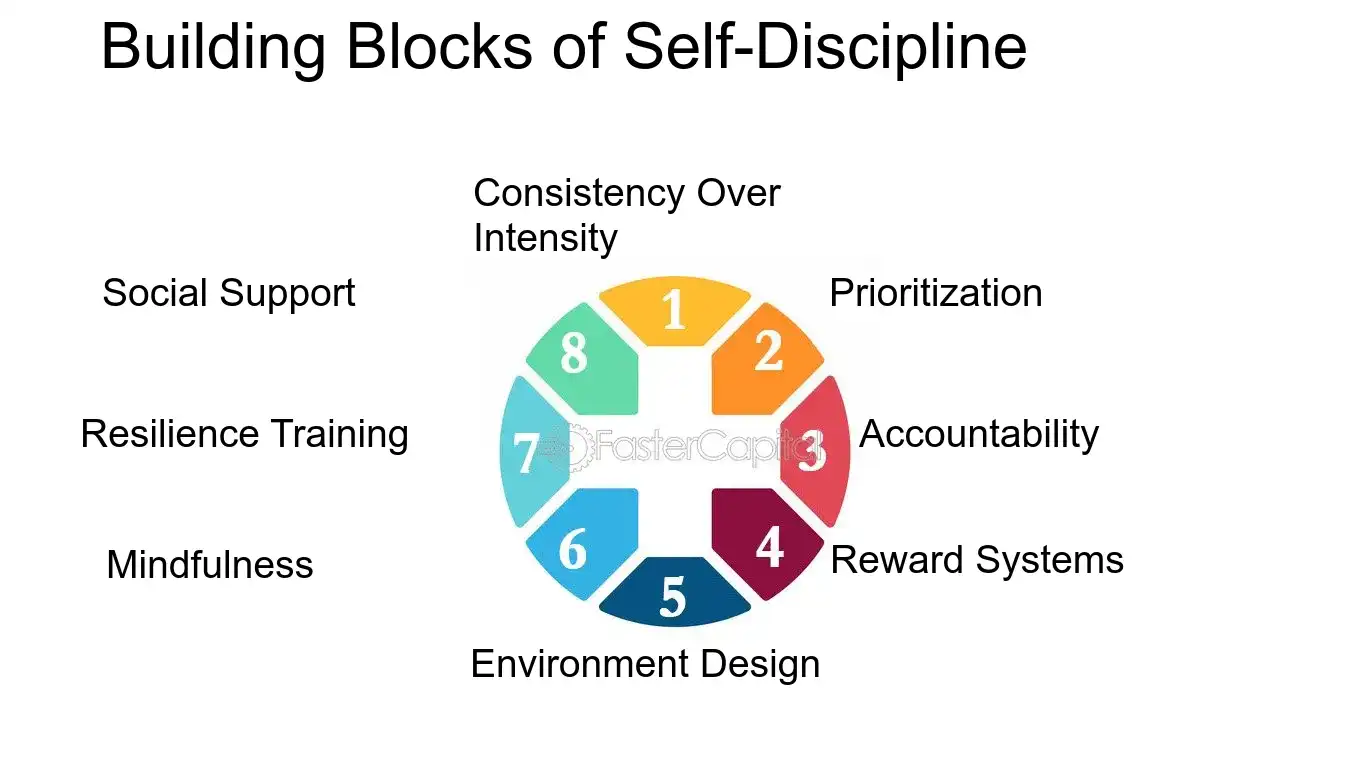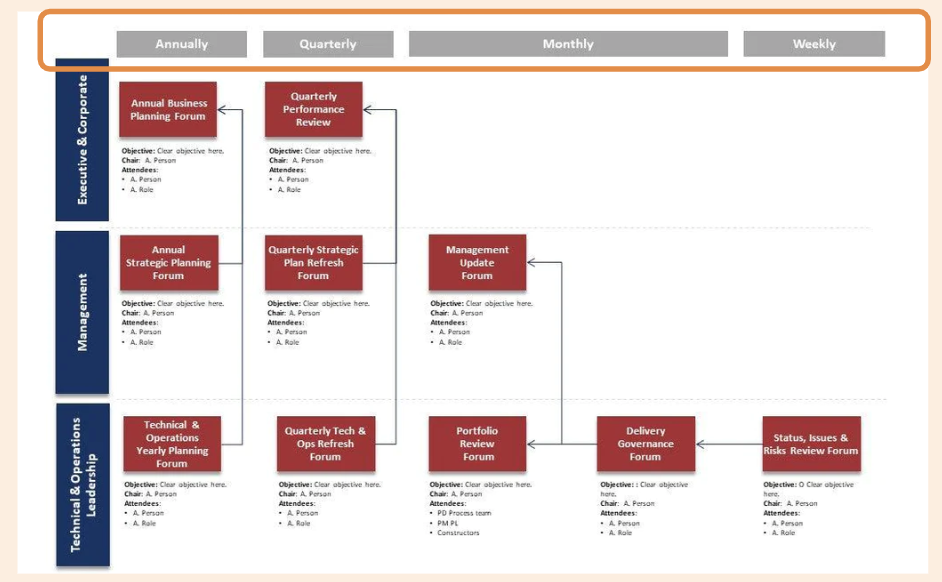Every thriving company looks different on the surface — different logos, industries, and product lines — but beneath that surface they almost always share a hidden structure: a repeatable, interconnected system of beliefs, processes, metrics, people and tools that convert strategy into consistent outcomes. This article peels back the layers of that architecture and shows how to design, test, and scale each element so your company becomes predictably successful rather than accidentally lucky.
Why a hidden structure matters
Most founders focus on visible levers — marketing campaigns, product launches, fundraising — and neglect the invisible scaffolding that makes those levers work repeatedly. Without the right structure, success is fragile: it depends on specific people, lucky timing, or one-off efforts. With the right structure, success becomes replicable, scalable, and resilient.
The hidden structure can be thought of as a stack of interdependent layers. Strengthen one layer and the others become more effective; ignore a critical layer and failures compound. Below we break down the essential layers and provide practical guidance for building each.
1) Vision, Mission, and Strategic Narrative (Direction)
A clear vision and mission are the North Star for decisions large and small. They are not corporate slogans — they are decision filters.
Why it’s critical
- Aligns teams quickly without micromanagement.
- Enables fast prioritization when resources are limited.
- Attracts customers and talent who share the same purpose.
How to build it
- Articulate a concise vision statement (1–2 sentences) describing the future you want to create.
- Write a mission that explains how you will get there and who you serve.
- Develop a short strategic narrative (a paragraph) that explains why your approach is uniquely positioned to achieve the vision.
Practical tips
- Test the narrative with five stakeholders (employee, customer, investor, partner, advisor). If two or more struggle to summarize it back, simplify.
- Use the vision as a veto: if a planned initiative doesn’t map to the narrative, pause and reassess.
2) Leadership and Decision Framework (Governance)
Leadership is more than senior titles — it’s the pattern of decisions. Effective companies codify how decisions are made and who owns them.
Key elements
- Decision rights matrix (who decides, who consults, who informs).
- Regular leadership rituals (weekly leadership sync, monthly strategy review).
- Mechanisms for escalation and reversal (how to undo a bad decision).
How to implement
- Create a RACI or DACI matrix for major decision types: product, hiring, M&A, pricing.
- Publicize decision rules so teams stop asking “who decides?” and start executing.
- Encourage leaders to write brief decision memos that capture reasoning and expected outcomes.
Why it scales
- Reduces bureaucracy and second-guessing.
- Speeds execution because teams know the boundaries and authority.
3) Culture and Psychological Safety (People)
Culture is the operating system that determines whether processes are followed and whether talent flourishes.
Components
- Core values (behaviors expected daily).
- Rituals and symbols (onboarding rituals, celebrations).
- Psychological safety (ability to speak up without fear).
Practical actions
- Handcraft onboarding to teach values through stories and examples, not just a slide deck.
- Run regular “failure postmortems” focused on learning, not blame.
- Reward behaviors that align with values (e.g., public recognition for cross-team collaboration).
Impact
- High-retention, motivated teams are far more productive and innovative than high-churn teams with equivalent headcount.
4) Organizational Design and Talent Architecture (Structure)
Who reports to whom, how teams are grouped, and how people are promoted — these are structural choices that shape performance.
Design principles
- Align structure to customer outcomes, not internal functions.
- Keep spans of control manageable: neither micro-managed nor leaderless.
- Build clear career ladders and competency frameworks.
Tactics
- Use small, cross-functional pods for customer-centric work (product + design + engineering + analytics + go-to-market).
- Create a centralized platform or shared services for common capabilities (data, infra) to avoid duplication.
- Define explicit promotion criteria and a regular calibration process to avoid bias and subjectivity.
5) Repeatable Processes and Playbooks (Operations)
Processes are the “how” of execution. High-performing companies capture tacit knowledge into repeatable playbooks.
Types of playbooks
- Sales playbooks (ideal customer profile, discovery script, objection handling).
- Product launch playbooks (go-to-market checklist, cross-team timelines).
- Incident response playbooks (severity levels, communication templates).
How to create them
- Document current best practices after a successful outcome — don’t wait for perfection.
- Store playbooks in an accessible, searchable knowledge base.
- Treat playbooks as living artifacts: iterate after each major use.
Benefits
- Reduces onboarding time, improves predictability, and scales expertise beyond individual contributors.
6) Metrics, Measurement and Feedback Loops (Signals)
You can’t manage what you don’t measure. Successful firms define a small set of leading and lagging metrics and build feedback loops to act on them.
Principles
- Focus on outcome metrics (retention, LTV, CAC payback) rather than vanity metrics.
- Use leading indicators to course-correct early (weekly active users, trial-to-paid conversion).
- Build short feedback loops that tie metrics to ownership and action.
Implementation
- Define the single most important metric (the north metric) for each team and make it visible.
- Automate dashboards and set up lightweight alerts for anomalies.
- Establish a weekly metrics review where teams present insights and actions, not slides.
7) Customer Obsession and Market Sensing (Orientation)
Customer-centric companies make decisions grounded in real user insight rather than internal assumptions.
Practices
- Continuous user research: interviews, session replay, NPS follow-ups.
- Customer advisory boards for high-value segments.
- Objective listening posts: support tickets, social monitoring, sales feedback.
How to operationalize
- Rotate product and engineering team members through customer support or sales to maintain frontline empathy.
- Treat customer feedback as raw material — prioritize it against strategic criteria.
- Use experiments and small releases to validate hypotheses quickly.
8) Technology, Data Infrastructure and Automation (Backbone)
Technology enables scale. The secret isn’t always the fanciest stack but rather resilient, observability-driven systems and useful data pipelines.
Elements
- A modular architecture that allows independent teams to move fast.
- Robust data warehouse and analytics layer with governed access.
- Automation for repetitive work: CI/CD, billing, onboarding flows.
Best practices
- Invest in core engineering hygiene: monitoring, error budgets, and automated tests.
- Treat data as a product: versioned schemas, SLAs for data quality, and owner responsibilities.
- Automate low-value manual tasks to free humans for high-value judgment and creativity.
9) Innovation Engine and Experimentation (Renewal)
Sustained success requires deliberate renewal. Companies with structures that nurture experiments outperform those that don’t.
How to design an innovation engine
- Allocate a steady, small percentage of resources to exploratory work with clear evaluation criteria.
- Use a staging process: idea — experiment — validated learning — scale.
- Celebrate intelligent failures and disseminate learnings across teams.
Tools
- Lightweight experimentation platforms for A/B testing.
- Innovation sprints and hackathons tied to strategic themes.
10) Financial Discipline and Governance (Sustainability)
Strong execution is supported by disciplined capital allocation and transparent governance.
Practices
- Budgeting tied to outcomes, not headcount alone.
- Rolling forecasts and scenario planning to manage uncertainty.
- Clear KPIs per unit of spend (CAC, marketing efficiency, operating margins).
Why it matters
- Prevents growth for growth’s sake and ensures the business can survive downturns and seize opportunities.
11) Scalability and Process Adaptation (Evolution)
Structures that work for 20 people often fail at 200. The hidden structure must be designed to evolve.
Signals to change
- Decision paralysis or slow approvals.
- High defect rates after rapid hiring.
- Customer complaints that point to systemic failures rather than individual mistakes.
How to adapt
- Institutionalize retrospectives to detect scaling stress.
- Introduce shared services and governance for cross-team coordination when duplication appears.
- Periodically revisit the org model and operating cadence as the company grows.
Bringing the layers together: the orchestration playbook
The real power of the hidden structure appears when these layers are intentionally orchestrated:
- Align the north metric to the vision so every team’s measurements support the same outcome.
- Map decision rights to organizational design so execution speed grows without chaos.
- Codify culture into hiring, onboarding, and performance systems to make behaviors persistent rather than personality-dependent.
- Connect customer feedback directly into product playbooks and metrics so experiments tie to measurable outcomes.
- Invest in infrastructure early enough to avoid technical debt but incrementally to avoid overbuilding.
Quick checklist to audit your company’s hidden structure
- Do we have a one-sentence vision and a one-paragraph narrative that employees can repeat?
- Are decision rights documented and understood?
- Are core processes (sales, launches, incidents) captured in playbooks and accessible?
- Do teams have explicit north metrics and weekly review rituals?
- Is customer insight systematically gathered and acted upon?
- Do we have a data owner and an automated dashboard for essential signals?
- Is there a defined process for experimentation and scaling validated ideas?
- Are budget decisions tied to measurable outcomes?
If you cannot answer “yes” to most of these, pick the top two and start there — progress compounds.
Conclusion
The visible trappings of success (a viral feature, massive funding, or a celebrity endorsement) are never the whole story. Underneath, successful companies are built on layered, connected systems — a hidden structure that aligns vision, decisions, people, processes, metrics and technology to produce predictable results. The good news is this structure is designable. Start small, document what works, and scale deliberately. Over time your organization will shift from accidental success to engineered success.
Frequently Asked Questions (FAQ)
Q1: How long does it take to build this hidden structure in a growing startup?
Answer: It varies by stage and starting point. Foundational elements (vision, decision framework, a few playbooks) can be established in 3–6 months. Deeper layers — like a robust data platform or mature leadership rituals — typically take 12–24 months. Prioritize changes that unblock execution first.
Q2: Can a fully remote company implement the same structure effectively?
Answer: Yes. Remote companies must be more explicit: decisions, playbooks, and rituals should be written and asynchronous-friendly. Invest more in documentation, synchronous cadences for cross-team alignment, and virtual rituals that reinforce culture.
Q3: What are common pitfalls when codifying playbooks and processes?
Answer: Over-documenting rigidly, making playbooks too long or theoretical, and failing to update them after usage. Good playbooks are concise, example-driven, and iterated based on real outcomes.
Q4: How should companies decide whether to centralize or decentralize functions like data or engineering?
Answer: Use a cost-of-coordination vs. duplication analysis. Centralize when duplication creates significant rework or quality issues (core infra, data governance). Decentralize when domain teams need autonomy for speed and experimentation.
Q5: How do you prevent metrics from driving perverse behavior?
Answer: Use balanced metrics (combine leading and lagging indicators), pair metrics with qualitative signals (customer interviews), and focus on a small set of meaningful KPIs. Make teams accountable for the outcomes and the behaviors, not only the numbers.
Q6: When is the right time to formalize an innovation program?
Answer: As soon as you have stable operational capacity — typically after achieving product-market fit. Before that, experimentation should be lightweight and integrated into core work. Once growth stabilizes, dedicate recurring resources to exploratory initiatives.
Q7: What tools or templates are most helpful for documenting the hidden structure?
Answer: Start with simple, shareable templates: a one-page strategy narrative, a RACI/DACI decision matrix template, a 2-page playbook format (context, steps, owners, success criteria), and a simple dashboard with the north metric. Keep tools lightweight and accessible (cloud docs, a basic BI dashboard, and a knowledge base).



